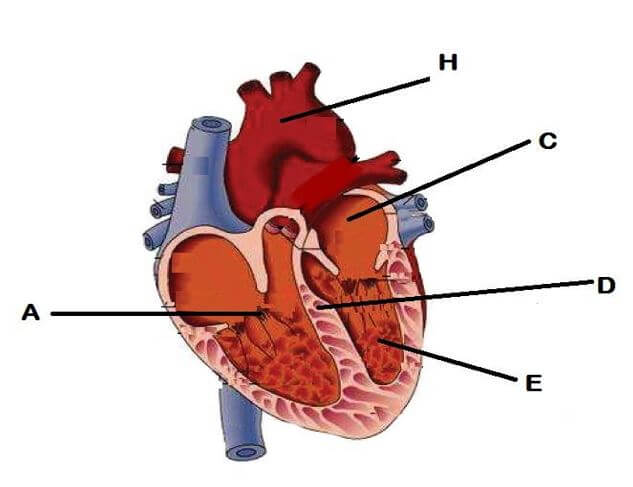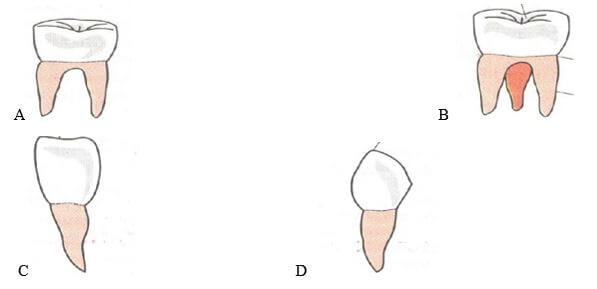Instruction to Candidates
- Write your Name, Adm. No., Class and Date in the spaces provided
- Answer all the questions
- You are required to spend the first 15 minutes of the 13/4Hrs around for this paper reading the whole paper carefully before commencing your work
- Answers must be written in the spaces provided in the question paper. Additional Pages must not be inserted.

QUESTIONS
- You are provided with visking tubing a solution labelled E, Iodine solution labelled solution F. Benedict’s solution labelled solution L, and a piece of thread.
Tie one end of the visking tubing tightly using the thread provided. With the help of a dropper put 10ml of the solution labelled E into the visking tubing. Tie the other end of the visking tubing tightly.
Ensure that there is no leakage at both ends of the visking tubing. Wash the outside of the visking tubing with water. Place the visking tubing in a 100ml beaker. Add distilled water into the beaker to reach the level of the liquid in the visking tubing. Allow the setup to stand for 30 minutes or more.- Using 2ml in a test tube in each case test for the food substance in the liquid outside the visking tube using. (3mks)
TEST
PROCEDURE
OBSERVATION
CONCLUSION
Iodine Solution(Solution F)
Benedict’s solution (Solution L)
- Using 2ml in a test tube in each case test for the food substance in the contents of the visking tubing using. (3mks)
TEST
PROCEDURE
OBSERVATION
CONCLUSION
Iodine Solution(Solution E)
Benedict’s solution (Solution L)
- Account for your results in a and b above. (4mks)
- Highlight the role of the physiological process demonstrated here (1mk)
- Using 2ml in a test tube in each case test for the food substance in the liquid outside the visking tube using. (3mks)
- The photograph below is of a mammalian heart. Study it and answer the questions that follows

- Name the parts labelled D and E. (2mks)
- State the role of part D. (1mk)
- Account for the structural differences between the parts marked C and E. (3mks)
- Name:
- Valve A (1mk)
- State it’s function. (1mk)
- Name the part marked C. (1mk)
-
- Name the blood vessel marked H. (1mk)
- State two fuctional differences between the arteries and the veins. (2mks)
- State 3 structural adaptations of the heart (3mks)
- Study the following illustration of various mammalian teeth and answer the questions that follow.

- Identify the teeth. (4mks)
A.................................
B.................................
C.................................
D................................. - Complete the table below. (8mks)
Tooth
Function
Adaptation
A
B
C
D
- Write the dental formula of an adult human being. (1mk)
- Distinguish between heterodont and homodont animals. (1mk)
- Identify the teeth. (4mks)

MARKING SCHEME
- You are provided with visking tubing a solution labelled E, Iodine solution labelled solution F. Benedict’s solution labelled solution L, and a piece of thread.
Tie one end of the visking tubing tightly using the thread provided. With the help of a dropper put 10ml of the solution labelled E into the visking tubing. Tie the other end of the visking tubing tightly.
Ensure that there is no leakage at both ends of the visking tubing. Wash the outside of the visking tubing with water. Place the visking tubing in a 100ml beaker. Add distilled water into the beaker to reach the level of the liquid in the visking tubing. Allow the setup to stand for 30 minutes or more.- Using 2ml in a test tube in each case test for the food substance in the liquid outside the visking tube using. (6mks)
TEST
PROCEDURE
OBSERVATION
CONCLUSION
Iodine solution (Solution f)
To 1cm3of solution add 2 drops of iodine solution.
The colour of iodine remains
Starch absent
Benedicts solution (Solution L)
To 2cm3 of solution add an equal amounts of Benedicts solution and gently heat
Colour of Benedicts solution changes from blue – green- yellow – brown-red
Reducing Sugar present
- Using 2ml in a test tube in each case test for the food substance in the contents of the visking tubing using. (3mks)
½ mrk for each correct answer.TEST
PROCEDURE
OBSERVATION
CONCLUSION
Iodine solution solution (f)
To 1cm3 of solution add 2 drops of iodine solution
The colour of iodine changes to blue- black
Starch present.
Benedict’s solution (Solution L)
To 2cm3 of solution add an equal amounts of Benedict’s solution and gently heat
Colour of Benedicts solution changes from blue-yellow-orange
Reducing Sugar present.
- Account for your results in a and b above. (4mks)
- glucose diffused across the visking tubule since it is smaller in size; compared to the starch. Hence the test for reducing sugars was positive
- Highlight the role of the physiological process demonstrated here (1mk)
- Absorption of mineral salts from the soil by the plants/digested food/gaseous exchange in plants and animals/removal of nitrogenous wastes/Translocation of food in the plants.
- Using 2ml in a test tube in each case test for the food substance in the liquid outside the visking tube using. (6mks)
- The photograph below is of mammalian heart. Study it and answer questions that follows
- Name the parts labelled D and E. (2mks)
- D longitudinal septum; septum;
- E Left ventricle
- State the role of part D. (1mk)
- Separates the left side from the right side of the heart hence preventing mixing of oxygenated and deoxygenated blood.
- Account for the structural differences between the parts marked C and E. (3mks)
- E is more muscular than C;E pumps blood to the rest of the body which is a longer distance while C pumps blood to the ventricle which is a shorter distance.
- State the function of
- Valve A-Tricuspid
- Prevent back flow of blood when the ventricles contract. (1mk)
- Name the part marked C. (1mk)
- Left Auricle/atriaum
-
- Name the blood vessel marked H. (1mk)
- Aorta
- State two fuctional differences between the arteries and the veins (2mks)
arteries
veins
Carry blood away from the heart
Carry blood toward the heart
Blood under high pressure
Blood under low pressure
Carry oxygenated blood except pulmonary artery
Carry deoxygenated blood except pulmonary vein
- Name the blood vessel marked H. (1mk)
- State 3 structural adaptations of the heart (3mks)
Cardiac muscles which are myogenic
Septum prevent mixing of oxygenated and deoxygenated blood
Coronary artery which provide nutrients and oxygenated blood to heart muscles
Coronary vein carry nitrogeneous waste and deoxygenated blood to heart muscles
Left ventricle thicker than right ventricle as it pump blood to all body parts
- Name the parts labelled D and E. (2mks)
- Study the following illustration of various mammalian teeth and answer the questions that follow.
- Identify the teeth. (4mks)
- A Premolar B Molar C Incisor D Canine
- Complete the table below. (8mks)
Tooth
Function
Adaptation
A
Crushing and grinding food
Has, ridges and cusps large surface area for grinding
B
Crushing and grinding.
Has ridges and cusps
Has three roots for firm anchorage
Classified to provide hard grinding surface.
C
Cutting and biting food/laterally flattened
Chisel shaped for cutting
One root for firmly attachment into the jaw
D
Seizing prey and reaping off fresh
Conical shaped/pointed tip for seizing prey and reaping off fresh one root for anchorage into the jaw
- Write the dental formula of an adult human being. (1mk)
- 2/2 c 1/1 pm 2/2 m 3/3 = 32
- Distinguish between heterodont and homodont animals. (1mk)
- Heteredont are animals with differentiated teeth (Incisor, Canines premolar and molars, while homodont are animals with teeth that are similar.
- Identify the teeth. (4mks)

COFIDENTIAL
- 10m/s of solution E ( a mixture of starch and glucose in ration 1:2.
- Iodine solution labelled solution F.
- Benedict’s solution labelled solution L.
- Four test tubes in a test tube rack
- Droppers (2)
- Source of heat
- 10ml measuring cylinder
- Visking tubing (8cm)
- Two pieces of thread (10cm)
- 100ml beaker
- Wash bottle with distilled water
- Means of timing
- Test tube holder.
Download Biology P3 Questions and Answers with Confidential- Form 3 Term 3 Opener Exams 2022.
Tap Here to Download for 50/-
Get on WhatsApp for 50/-
Why download?
- ✔ To read offline at any time.
- ✔ To Print at your convenience
- ✔ Share Easily with Friends / Students

